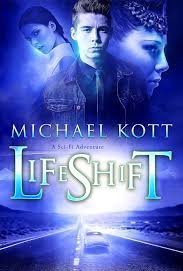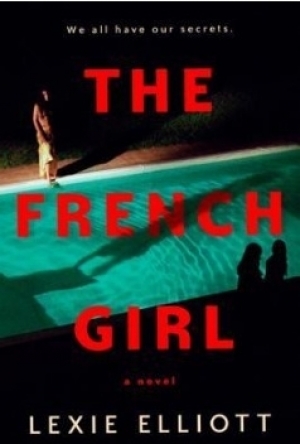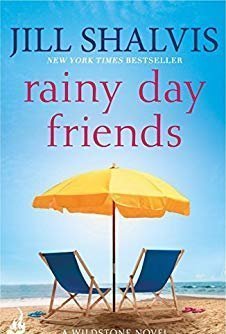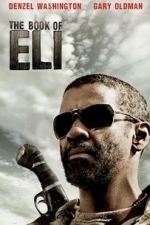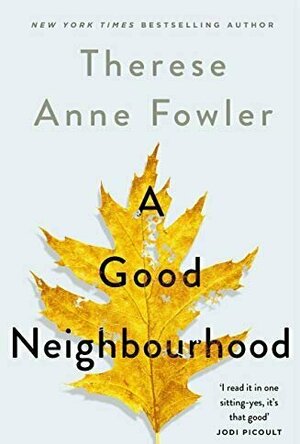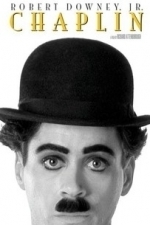Search
Search results
Ivana A. | Diary of Difference (1171 KP) rated LifeShift in Books
Sep 13, 2018
www.diaryofdifference.com
Things can change in a moment. All it takes it that tiny second that can turn our lives upside down. This happened to Alex. See, one day, he is just this unpopular boy that goes to school, and works to earn a little something for himself. Then, in one little moment, he is about to be hit by a train. Only - a miracle happens and he remains alive. But something changed. No, EVERYTHING changed. A new girl comes to school the next morning and tells him he is an Eternal, just like her, a person that lives many lives and keeps getting reborn. He is also supposed to remember his past lives once he turns 18. And not only that, but he also needs to go on a mission to find another Eternal, that would lead them to Zeus.
Bonus: This book is filled with Greek Mythology characters, but they are not the Greek Gods as we know them - they are all Eternals and have a special new fictional story.
I know some of you guys messaged me that the synopsis of the book looked so complicated, and it put you off. The story is actually quite interesting and easy to understand, once you start reading it. So go on, and put this on your TBRs!
The story and the plot itself are so unique - I haven’t read anything like this before. Michael managed to recreate a whole new world, and new type of creatures - Eternals. I loved the idea of the Eternals - people that have many lives and remember their previous lives. They can even choose where they want to get born next, and how to look. I also loved the superpowers they have - communicating through thoughts and dreams, healing, reading the past of a person by touching their hand… However, in many places in the book this was described too fast and too wide - there would be 5 pages of an essay of only description. I would much prefer if we could explore the story and history through the characters more.
The characters were likable. All of them. I liked Alex - he was a typical American boy. Sometimes a bit oblivious to everything happening around him. I found it a bit upsetting how he couldn’t choose who he wanted to be with. But on the other side, I quite admired him for how he coped when his world just changed in an instant, and so many people he knew were not what he thought they were, and on top of that he had to choose who to trust and who not to, and he had to agree to go on a mission that risks his life, even though he still couldn’t remember if he was an Eternal, which meant that maybe he is not like them at all.
Circe was an interesting character too. Such an energetic person with a wild personality - she would be the one that brightens up a room as soon as she walks into it. She can also be very possessive of the people she loves. She quite reminds me of myself in my teenage years in everything she did - funny, reckless moments - all worth remembering. Even though I couldn’t find a favourite character, all the people we meet in the book were equally loved by me.
This is an amazing story - a fiction fantasy that gathered Greek Mythology characters and created something entirely new. I enjoyed it a lot and I can’t wait for the next book of the series to come out. This book opens up a great discussion about people that can be reborn and remember their past. My view on life is that once we die, our soul goes into another body that gets born in the exact same moment, and even though we don’t remember it, we always carry a piece of that inside our hearts. There are occasions though, where some people remember their past lives.
What are your thoughts about life after death? Would you maybe pick this book up?
A special thank you to the author, Michael Kott, who send me a copy of LifeShift in exchange for an honest review. All my thoughts are my own, and completely unbiased.
Things can change in a moment. All it takes it that tiny second that can turn our lives upside down. This happened to Alex. See, one day, he is just this unpopular boy that goes to school, and works to earn a little something for himself. Then, in one little moment, he is about to be hit by a train. Only - a miracle happens and he remains alive. But something changed. No, EVERYTHING changed. A new girl comes to school the next morning and tells him he is an Eternal, just like her, a person that lives many lives and keeps getting reborn. He is also supposed to remember his past lives once he turns 18. And not only that, but he also needs to go on a mission to find another Eternal, that would lead them to Zeus.
Bonus: This book is filled with Greek Mythology characters, but they are not the Greek Gods as we know them - they are all Eternals and have a special new fictional story.
I know some of you guys messaged me that the synopsis of the book looked so complicated, and it put you off. The story is actually quite interesting and easy to understand, once you start reading it. So go on, and put this on your TBRs!
The story and the plot itself are so unique - I haven’t read anything like this before. Michael managed to recreate a whole new world, and new type of creatures - Eternals. I loved the idea of the Eternals - people that have many lives and remember their previous lives. They can even choose where they want to get born next, and how to look. I also loved the superpowers they have - communicating through thoughts and dreams, healing, reading the past of a person by touching their hand… However, in many places in the book this was described too fast and too wide - there would be 5 pages of an essay of only description. I would much prefer if we could explore the story and history through the characters more.
The characters were likable. All of them. I liked Alex - he was a typical American boy. Sometimes a bit oblivious to everything happening around him. I found it a bit upsetting how he couldn’t choose who he wanted to be with. But on the other side, I quite admired him for how he coped when his world just changed in an instant, and so many people he knew were not what he thought they were, and on top of that he had to choose who to trust and who not to, and he had to agree to go on a mission that risks his life, even though he still couldn’t remember if he was an Eternal, which meant that maybe he is not like them at all.
Circe was an interesting character too. Such an energetic person with a wild personality - she would be the one that brightens up a room as soon as she walks into it. She can also be very possessive of the people she loves. She quite reminds me of myself in my teenage years in everything she did - funny, reckless moments - all worth remembering. Even though I couldn’t find a favourite character, all the people we meet in the book were equally loved by me.
This is an amazing story - a fiction fantasy that gathered Greek Mythology characters and created something entirely new. I enjoyed it a lot and I can’t wait for the next book of the series to come out. This book opens up a great discussion about people that can be reborn and remember their past. My view on life is that once we die, our soul goes into another body that gets born in the exact same moment, and even though we don’t remember it, we always carry a piece of that inside our hearts. There are occasions though, where some people remember their past lives.
What are your thoughts about life after death? Would you maybe pick this book up?
A special thank you to the author, Michael Kott, who send me a copy of LifeShift in exchange for an honest review. All my thoughts are my own, and completely unbiased.
Whatchareadin (174 KP) rated The Secrets We Keep in Books
May 10, 2018
Kit Stitski is dead. He fell into the quarry during a party and drowned and ever since June no one has been able to come forward to say what really happened to him. Now that school has started, his mother is making a plea with the students to come forward with what they know. Was it just a tragic accident or did someone do something to Kit? Clementine was there, she spoke with Kit and sent him off to the bushes when he said he had to go to the bathroom. Ellie was there too, she is keeping Clementine's secret, but does she have a secret of her own? Jake was there, in fact, Kit followed him to the party. And Mac was there with Ellie, did he do something to Kit?
As a new school year starts, everyone is reflecting on the tragic night at the end of the previous school year. They've had the whole summer to think about it and now that school is back in session, Ms. Stitski wants answers and closure about what happened with her son. When she shows up for the first day of school, Jake, Clementine, Ellie, and Mac are all on edge because they feel they are responsible for Kit's death. They can't imagine that this was just an accident, something must of happened to him when he was out of their sight. But is that possible?
I really enjoyed this YA novel by Deb Loughead. I was a quick read that kept me engrossed the entire time. The author never really mentions where the story is set, and it could be any town in any country. Kids will be kids and will do what they want despite the rules set by their parents. None of the kids should have been at the quarry that night. It's a dangerous place and even more so when it is dark. Kit was mentally challenged, but loved by all in the school. The students recall happy moments with Kit that help his family to heal after this difficult situation. This is a story you could see in today's news stories. A tragic accident that took the life of an innocent person.
I think people of all ages will enjoy this book. I think it is especially important for youth to read. It has a message of honesty in the book. About being able to talk to your parents about the things that are going on in your world. The book has a strong family focus and includes diverse family structures that are seen today. I recommend this book for anyone who is looking for a good novel to read.
Thank you to NetGalley and Dundurn for the opportunity to review this book.
As a new school year starts, everyone is reflecting on the tragic night at the end of the previous school year. They've had the whole summer to think about it and now that school is back in session, Ms. Stitski wants answers and closure about what happened with her son. When she shows up for the first day of school, Jake, Clementine, Ellie, and Mac are all on edge because they feel they are responsible for Kit's death. They can't imagine that this was just an accident, something must of happened to him when he was out of their sight. But is that possible?
I really enjoyed this YA novel by Deb Loughead. I was a quick read that kept me engrossed the entire time. The author never really mentions where the story is set, and it could be any town in any country. Kids will be kids and will do what they want despite the rules set by their parents. None of the kids should have been at the quarry that night. It's a dangerous place and even more so when it is dark. Kit was mentally challenged, but loved by all in the school. The students recall happy moments with Kit that help his family to heal after this difficult situation. This is a story you could see in today's news stories. A tragic accident that took the life of an innocent person.
I think people of all ages will enjoy this book. I think it is especially important for youth to read. It has a message of honesty in the book. About being able to talk to your parents about the things that are going on in your world. The book has a strong family focus and includes diverse family structures that are seen today. I recommend this book for anyone who is looking for a good novel to read.
Thank you to NetGalley and Dundurn for the opportunity to review this book.
Kristy H (1252 KP) rated On the Come Up in Books
Apr 4, 2019
This was an excellent follow-up to THE HATE YOU GIVE. Man, Angie Thomas can just flat out write, and the characters and worlds she creates are second to none. This book occurs in the same neighborhood as THUG, picking up a year after the riots. The neighborhood is still reeling, and nothing is quite the same.
"I'm a hoodlum from a bunch of nothing."
Bri is a wonderful character--a realistic teenager struggling with her love life and school, as well as the systematic issues of poverty, racism, drug dealing, and more facing her neighborhood, peers, and family. She's severely affected by what happened to her parents: the death of her father, who is famous in the Garden, and her mom's past drug use. The book does a great job of showing the pressures on everyone in Bri's family--her older brother went to college, but is back, living at home and working in a pizza shop, trying to help his mom out. Her mom is still paying for her past sins: trying to get a job isn't easy, nor is it easy to keep the faith of your teenage daughter, who calls her mom by her first name. And Bri--well she wants to become a rapper and earn money to get her family out of poverty. As such, she doesn't always make the best choices. And, to her, it almost seems like rapper is the only choice for freedom.
"That's how it goes though. The drug dealers in my neighborhood aren't struggling. Everybody else is."
Don't get me wrong, though. While this book is beautiful and does such a great job at showing so many of the challenges facing Bri and the Garden's community, it's also an engaging and funny read. As I said, Thomas is such an amazing writer. The church scenes in this novel are priceless: I was laughing at loud at some points. And Bri is just so vivid in her characteristics. She's a self-proclaimed "nerd" who loves things like Star Wars and some of her references and jokes in the books are just hilarious.
The supporting cast in this one is great--Bri's brother, her friends (including a gay BFF!), Aunt Pooh, the church biddies, and more. They all jump off the pages just like Bri. Much like THUG, this is a story of family at its core and even if you'll want to shake Bri for some of her bad decisions, it's pretty much impossible not to love her, her family, and her friends.
Overall, I really liked this book. It's well-written, tackles some serious topics in a great way, and yet is funny and poignant as well. I highly recommend it. 4+ stars.
"I'm a hoodlum from a bunch of nothing."
Bri is a wonderful character--a realistic teenager struggling with her love life and school, as well as the systematic issues of poverty, racism, drug dealing, and more facing her neighborhood, peers, and family. She's severely affected by what happened to her parents: the death of her father, who is famous in the Garden, and her mom's past drug use. The book does a great job of showing the pressures on everyone in Bri's family--her older brother went to college, but is back, living at home and working in a pizza shop, trying to help his mom out. Her mom is still paying for her past sins: trying to get a job isn't easy, nor is it easy to keep the faith of your teenage daughter, who calls her mom by her first name. And Bri--well she wants to become a rapper and earn money to get her family out of poverty. As such, she doesn't always make the best choices. And, to her, it almost seems like rapper is the only choice for freedom.
"That's how it goes though. The drug dealers in my neighborhood aren't struggling. Everybody else is."
Don't get me wrong, though. While this book is beautiful and does such a great job at showing so many of the challenges facing Bri and the Garden's community, it's also an engaging and funny read. As I said, Thomas is such an amazing writer. The church scenes in this novel are priceless: I was laughing at loud at some points. And Bri is just so vivid in her characteristics. She's a self-proclaimed "nerd" who loves things like Star Wars and some of her references and jokes in the books are just hilarious.
The supporting cast in this one is great--Bri's brother, her friends (including a gay BFF!), Aunt Pooh, the church biddies, and more. They all jump off the pages just like Bri. Much like THUG, this is a story of family at its core and even if you'll want to shake Bri for some of her bad decisions, it's pretty much impossible not to love her, her family, and her friends.
Overall, I really liked this book. It's well-written, tackles some serious topics in a great way, and yet is funny and poignant as well. I highly recommend it. 4+ stars.
Kristy H (1252 KP) rated The French Girl in Books
Feb 12, 2018
Slow-moving yet mesmerizing thriller
Kate and five of her friends spent a week at a French farmhouse whilst students at Oxford. All goes well until the last night of the trip, when there's a huge blowup among the group. And, always, flitting at the edges is Severine, the French girl who stayed next door where the group was vacationing. After that night, Severine disappeared, but her body was never found. Until, ten years later, it turns up in a well behind the farmhouse. Suddenly Kate and her friends are being questioned by the French police, bringing up old memories, and jeopardizing the life Kate has worked so hard to create.
This novel takes some getting used to. Kate herself takes some getting used to. For instance, Kate "sees" Severine, as in she imagines Severine is watching her--sometimes she just sees her skull, sometimes Severine's entire body is following Kate, or languidly sitting in her apartment. In the beginning, these mentions are odd and a little creepy and the book moves rather slowly, making it hard to keep your interest. Kate and her group of friends still seem like the gaggle of college students they were ten years ago when Severine disappeared--and you find yourself wondering why you should care about any of them and their manufactured drama. It's hard to get invested in these somewhat spoiled, immature characters.
Luckily, I have to say, there was still some sort of pull about Kate that made me want to keep reading. You can't help but remain curious about what went down that night between the six friends and if one (or more) of them truly had a hand in Severine's death. It was enough to keep me reading, and I have to admit, Kate grew on me, I found myself feeling almost protective of her as the book wore on. You have to buy-in to the Severine premise a bit, but I won't lie, by the end, I liked the darn woman. What can I say? Elliott also does a good job in keeping you guessing, always casting suspicion on each friend, so you never quite get a handle on exactly what happened that week.
Overall, this one is a slow-moving thriller. It's focused on the build-up of its characters and meandering along to its reveals. If you're looking for a fast-paced, twisty mystery, this isn't it. But if you want to get sucked into the lives of your characters and discover some surprising things along the way, you'll enjoy this one. 3.5+ stars.
I received a copy of this novel from the publisher and Edelweiss in return for a honest review. More at http://justacatandabookatherside.blogspot.com/.
This novel takes some getting used to. Kate herself takes some getting used to. For instance, Kate "sees" Severine, as in she imagines Severine is watching her--sometimes she just sees her skull, sometimes Severine's entire body is following Kate, or languidly sitting in her apartment. In the beginning, these mentions are odd and a little creepy and the book moves rather slowly, making it hard to keep your interest. Kate and her group of friends still seem like the gaggle of college students they were ten years ago when Severine disappeared--and you find yourself wondering why you should care about any of them and their manufactured drama. It's hard to get invested in these somewhat spoiled, immature characters.
Luckily, I have to say, there was still some sort of pull about Kate that made me want to keep reading. You can't help but remain curious about what went down that night between the six friends and if one (or more) of them truly had a hand in Severine's death. It was enough to keep me reading, and I have to admit, Kate grew on me, I found myself feeling almost protective of her as the book wore on. You have to buy-in to the Severine premise a bit, but I won't lie, by the end, I liked the darn woman. What can I say? Elliott also does a good job in keeping you guessing, always casting suspicion on each friend, so you never quite get a handle on exactly what happened that week.
Overall, this one is a slow-moving thriller. It's focused on the build-up of its characters and meandering along to its reveals. If you're looking for a fast-paced, twisty mystery, this isn't it. But if you want to get sucked into the lives of your characters and discover some surprising things along the way, you'll enjoy this one. 3.5+ stars.
I received a copy of this novel from the publisher and Edelweiss in return for a honest review. More at http://justacatandabookatherside.blogspot.com/.
Carma (21 KP) rated Rainy Day Friends (Wildstone, #2) in Books
Jun 17, 2019
Rainy Day Friends by Jill Shalvis is a Wildstone series book and of course another great one from this author. I loved the format of this book, and I really dont think Ive seen it before, of each page having an interaction between Lanie and her anxiety.
Lanie (Delaney) Jacobs is 30, starting a new job 2 ½ hours away from her old life and leaving everything behind (including her anxiety) for 2 months. Unfortunately her anxiety decides to come along for the ride. Lanie just lost her husband and what she finds out about her husband after his death would send anyone packing for a quick getaway. She agrees to take on a temporary job helping a family business re-brand their business and quickly finds herself in the middle of a real Walton family family.
Mark Capriotti is as rough and rugged as they come. He is an ex military man, an assistant sheriff, but at the end of the day, this tough guys heart has long been captured by his twin daughters. Having to move back home with his family to be a single dad to his girls was the last thing he ever thought would happen. He is grateful to have his mom, 2 sisters, uncles and more to pick up the slack of helping to care for Samantha and Sierra. He never wants to fall in love again, and isnt that just what happens.
With a back story for Lanie that comes out piece by piece and secondary characters to help push it along, this story was really well told. My only gripe about this entire book was the abrupt ending. I dont know if it was due to reading on an ereader that it felt more abrupt but it stopped and I was feeling like I missed some pages. As I said above I loved the anxiety quotes on each page, how many of us have those same thoughts on a daily or weekly basis. I loved how this family came together and stayed together through thick and thin. Being sarcastic myself, I enjoyed Mias sarcastic humor most of all. Even Uncle Jack, though sometimes behaving like a overgrown frat boy, had insightful wisdom to share with anyone who asked (or even those who didnt).
Overall this story was well written for each character both main or secondary. I enjoyed following along on their journey of escape, attraction, hiding, and eventually not fighting the feelings. I received an advance copy of this novel without any expectations for review. Any and all opinions expressed are my own (whether you like them or not ha).
Lanie (Delaney) Jacobs is 30, starting a new job 2 ½ hours away from her old life and leaving everything behind (including her anxiety) for 2 months. Unfortunately her anxiety decides to come along for the ride. Lanie just lost her husband and what she finds out about her husband after his death would send anyone packing for a quick getaway. She agrees to take on a temporary job helping a family business re-brand their business and quickly finds herself in the middle of a real Walton family family.
Mark Capriotti is as rough and rugged as they come. He is an ex military man, an assistant sheriff, but at the end of the day, this tough guys heart has long been captured by his twin daughters. Having to move back home with his family to be a single dad to his girls was the last thing he ever thought would happen. He is grateful to have his mom, 2 sisters, uncles and more to pick up the slack of helping to care for Samantha and Sierra. He never wants to fall in love again, and isnt that just what happens.
With a back story for Lanie that comes out piece by piece and secondary characters to help push it along, this story was really well told. My only gripe about this entire book was the abrupt ending. I dont know if it was due to reading on an ereader that it felt more abrupt but it stopped and I was feeling like I missed some pages. As I said above I loved the anxiety quotes on each page, how many of us have those same thoughts on a daily or weekly basis. I loved how this family came together and stayed together through thick and thin. Being sarcastic myself, I enjoyed Mias sarcastic humor most of all. Even Uncle Jack, though sometimes behaving like a overgrown frat boy, had insightful wisdom to share with anyone who asked (or even those who didnt).
Overall this story was well written for each character both main or secondary. I enjoyed following along on their journey of escape, attraction, hiding, and eventually not fighting the feelings. I received an advance copy of this novel without any expectations for review. Any and all opinions expressed are my own (whether you like them or not ha).
Gareth von Kallenbach (980 KP) rated The Book of Eli (2010) in Movies
Aug 8, 2019
In a post apocalyptic future, a loan man travels the desolate roads on a solitary quest. The man known only as Eli (Denzel Washington), has been travelling west for decades on a mission of faith after receiving what he believes to be a mission of divine origin.
The solitary life of Eli is interrupted now and then by bandits that roam the lands causing death and mayhem to all those unfortunate enough to cross their path.
This often ends very badly for the bandits as Eli is highly skilled at defending himself with all manner of weapons, especially a very large knife.
It is his deadly skills that lands Eli on the radar of as local dictator named Carnegie (Gary Oldman), who desires to add Eli to his army as he plans to restore society under his rule. The town Eli finds himself in is the first in a planned series of towns that Carnegie plans to rule, and a man with the knowledge and skill of Eli is simply too good to let get away.
In an attempt to entice Eli into his service, Carnegie provides Eli with food, water, shelter, and women. When Eli is presented with the lovely Solara (Mila Kunis), he refuses to take advantage of her and instead leads her in a prayer before sharing his food with her.
This kind act touches Solara who recites the mysterious words of the prayer to her mother in an attempt to learn the meaning of what Eli was saying. Carnegie discovers what Eli has said, and learns of a book in Eli’s possession that he has been guarding for many years.
Carnegie is obsessed with obtaining the book as he sees this as the missing piece to his planned empire and will stop at nothing to obtain it.
What follows is a deadly game of cat and mouse as Carnegie and his minions are in hot pursuit of Eli and Solara as the future of humanity rests in the balance.
“The Book of Eli” is a winning mix of action and story that cleverly balances the two so that one side never overshadows the other.
The film is driven by the strong performances of Oldman and Washington as well as the simple yet strong message of faith and determination.
Both lead characters have a mystery to them that is never fully explored as the audience is given only what we need to know about each character for the purpose of the story.
The most surprising thing about the film was the strong and inspirational message it contained that may be too strong for some, but to me was not only inspiring but unexpected in a Hollywood film.
In the end, the strong cast, good action, and story makes this a film worth seeing and a pleasant surprise.
The solitary life of Eli is interrupted now and then by bandits that roam the lands causing death and mayhem to all those unfortunate enough to cross their path.
This often ends very badly for the bandits as Eli is highly skilled at defending himself with all manner of weapons, especially a very large knife.
It is his deadly skills that lands Eli on the radar of as local dictator named Carnegie (Gary Oldman), who desires to add Eli to his army as he plans to restore society under his rule. The town Eli finds himself in is the first in a planned series of towns that Carnegie plans to rule, and a man with the knowledge and skill of Eli is simply too good to let get away.
In an attempt to entice Eli into his service, Carnegie provides Eli with food, water, shelter, and women. When Eli is presented with the lovely Solara (Mila Kunis), he refuses to take advantage of her and instead leads her in a prayer before sharing his food with her.
This kind act touches Solara who recites the mysterious words of the prayer to her mother in an attempt to learn the meaning of what Eli was saying. Carnegie discovers what Eli has said, and learns of a book in Eli’s possession that he has been guarding for many years.
Carnegie is obsessed with obtaining the book as he sees this as the missing piece to his planned empire and will stop at nothing to obtain it.
What follows is a deadly game of cat and mouse as Carnegie and his minions are in hot pursuit of Eli and Solara as the future of humanity rests in the balance.
“The Book of Eli” is a winning mix of action and story that cleverly balances the two so that one side never overshadows the other.
The film is driven by the strong performances of Oldman and Washington as well as the simple yet strong message of faith and determination.
Both lead characters have a mystery to them that is never fully explored as the audience is given only what we need to know about each character for the purpose of the story.
The most surprising thing about the film was the strong and inspirational message it contained that may be too strong for some, but to me was not only inspiring but unexpected in a Hollywood film.
In the end, the strong cast, good action, and story makes this a film worth seeing and a pleasant surprise.
Kristy H (1252 KP) rated A Good Neighborhood in Books
Mar 26, 2020
Oak Knoll is a close-knit multiracial neighborhood in North Carolina where everyone looks out for one another. Valerie Alston-Holt, a professor and single mother, has raised her biracial son, Xavier, there since he was small. Their calm life changes, however, when the Whitman family moves in next door. First they raze the current house and build a "Mcmansion," whose very existence threatens the health of Valerie's beloved historic oak tree. Brad Whitman is a local celebrity, known for his charisma and commercials for his company, Whitman HVAC. His wife, Julia, has long escaped her trailer park days and is now raising her daughters Julia and Lily in a privilege she once dreamed of. But soon the Alston-Holts and Whitmans find them themselves fighting over the oak tree's well-being and then, the budding romance between Julia and Xavier.
"An upscale new house in a simple old neighborhood. A girl on a chaise beside a swimming pool, who wants to be left alone. We begin our story here, in the minutes before the small event that will change everything."
This book took my heart and spit it right out again. Oh my goodness. It's a different, beautiful, and absolutely heartbreaking read. We're told from the very beginning--by our omniscient third person narrator--that something bad is going to happen. And yet, I lived in denial that this was true. I devoured this book in two halves. It's utterly engrossing, and the characters just pop off the pages. The teens, especially. Oh Juniper and Xavier. I will not easily forget either of you.
A Good Neighborhood tackles a host of timely topics, and it handles all of them deftly. Race, religion, sexism, feminism--none of these are exempt in the pages of this novel. We see whiteness as a symbolism for purity, and we watch as Juniper struggles with the set of values being pushed upon her by her mother and stepfather, including a "purity vow" to remain both a virgin and loyal to her future husband. And then there's Xavier, a talented musician, who has been raised by his strong mother after his father's death. She wants so much for her son to do anything, but yet lives in fear because he is biracial. Juniper, Xavier, and Valerie were such powerful characters.
I do not want to give much of the plot away, but I can tell you that this book is heartbreaking and beautiful. It will get you to think about racism and sexism. The strong themes of good versus evil are presented in such a unique and compelling manner. Adding the third-person piece just gives an extra piece to the story. This book is incredibly well-written and will stay with you for quite some time. 4.5 stars.
"An upscale new house in a simple old neighborhood. A girl on a chaise beside a swimming pool, who wants to be left alone. We begin our story here, in the minutes before the small event that will change everything."
This book took my heart and spit it right out again. Oh my goodness. It's a different, beautiful, and absolutely heartbreaking read. We're told from the very beginning--by our omniscient third person narrator--that something bad is going to happen. And yet, I lived in denial that this was true. I devoured this book in two halves. It's utterly engrossing, and the characters just pop off the pages. The teens, especially. Oh Juniper and Xavier. I will not easily forget either of you.
A Good Neighborhood tackles a host of timely topics, and it handles all of them deftly. Race, religion, sexism, feminism--none of these are exempt in the pages of this novel. We see whiteness as a symbolism for purity, and we watch as Juniper struggles with the set of values being pushed upon her by her mother and stepfather, including a "purity vow" to remain both a virgin and loyal to her future husband. And then there's Xavier, a talented musician, who has been raised by his strong mother after his father's death. She wants so much for her son to do anything, but yet lives in fear because he is biracial. Juniper, Xavier, and Valerie were such powerful characters.
I do not want to give much of the plot away, but I can tell you that this book is heartbreaking and beautiful. It will get you to think about racism and sexism. The strong themes of good versus evil are presented in such a unique and compelling manner. Adding the third-person piece just gives an extra piece to the story. This book is incredibly well-written and will stay with you for quite some time. 4.5 stars.

Joan of Arc: The Image of Female Heroism
Book
The fame of Joan of Arc began in her lifetime and, though it has dipped a little now and then, she...
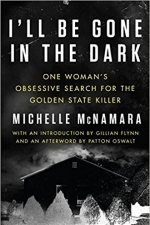
I'll Be Gone in the Dark: One Woman's Obsessive Search for the Golden State Killer
Book
Introduction by Gillian Flynn Afterword by Patton Oswalt "This is a one sit-down read. That's how...
Felipe (17 KP) rated Chaplin (1992) in Movies
Dec 7, 2020
A modern tragedy meant to be one of the greats
Contains spoilers, click to show
Richard Attenborough delivers another masterpiece of cinematic biography and is a worthy successor to Ghandi. The structure of the film is told as a flashback while Charlie Chaplin is writing his autobiography with a fictional editor that does not exist. We see for the first time the flaws of who Chaplin is as a person and we see him confront his past in a way that is painful not unlike how it is painful when we relive moments in our lives we would rather choose to forget. However, the success of the film is how it strips the illusion of who Chaplin was and presents to us a person who is tragically flawed but who is unbale to appreciate his own genius. An example is when Chaplin's version of the invention of the Tramp is seen for what he imagined it to be an idealized moment in which the character is calling to him except for what it really was, We see the reality of the movies during this time; a hectic spur of the moment improvised invention drawn from real life. Yet we see Chaplin as the midwife to this new artform the movies and we see him develop it for what it is, the highest expression of art that stirs our imagination and makes us believe anything is possible. We even cry during Chaplin's moments of personal tragedy; the insanity and loss of his mother; repeated failed marriages; the death of his best friend, Douglas Fairbanks and finally his tragic and painful exile from America the only place he knew as home all taking place in the backdrop of the invention and evolution of cinema. However, I feel that in the end Chaplin is the one that comes out triumphant. In the last moments of the movie we see how Chaplin despairs that he feels that he has been forgotten and made irrelevant by the changing times; he feels that the weight of not only his age but the weight of the world on his shoulders and yet we see that everything he believes himself to be is completely wrong when Hollywood bestows on him the greatest honor which is not only the special Oscar but also a standing ovation. His final triumph is to be made a knight by Queen Elizabeth II, we are truly made to see that although flawed he is triumphant in the end.
